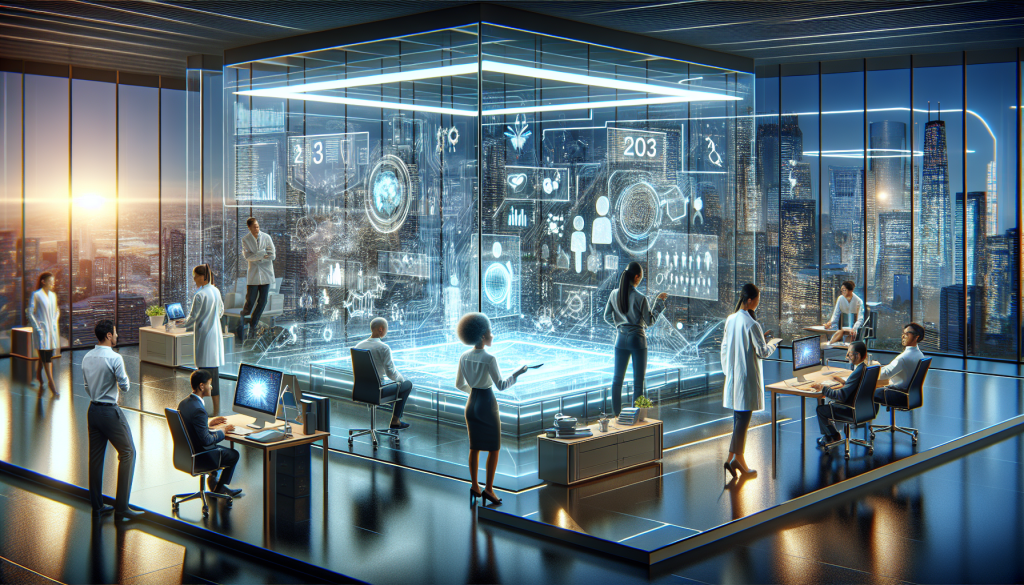
Generative AI, a formidable advancement in artificial intelligence, is rapidly transforming the way developers tackle creative projects. Its potential to generate new content, whether it be text, images, videos, music, or even code, opens up a universe of possibilities for developers eager to explore innovative pathways. As we delve into this subject, we aim to clarify how developers can effectively harness the power of generative AI, echoing the expertise visible on leading platforms like Google’s Cloud, NVIDIA, and IBM.
Generative AI encompasses a range of models and tools specifically crafted to create novel content. Unlike traditional AI algorithms focused on analysis and prediction, generative AI ‘creates’. It leverages vast datasets and sophisticated algorithms to produce outputs that are not merely copies but entirely new creations, sparking the creative process in various domains.
Developers interested in generative AI for developers need to get acquainted with its core components: large language models (LLMs), prompt engineering, and frameworks that enable these technologies. LLMs such as GPT (Generative Pre-trained Transformer) are designed to understand and generate human-like text, a gateway to creating content that aligns with specific objectives or creative visions.
Platforms like Google’s Cloud AI and NVIDIA’s AI ecosystem provide developers with comprehensive tools to implement generative AI solutions. Google’s Gemini Developer API, for instance, offers state-of-the-art models that help integrate AI into applications, making it accessible for all developers to build AI-driven solutions efficiently and responsibly.
NVIDIA has tailored its platform to support developers by providing accelerated computing capabilities. Its suite of tools and frameworks allows for seamless integration of generative AI, tailored for complex workloads. Whether you’re developing new graphic designs or training a model to generate code, NVIDIA’s resources can significantly enhance productivity and innovation.
Generative AI’s applicability is vast. For instance, in the domain of software development, generative AI models can automate the generation of boilerplate code, assist in debugging, and translate code across different languages, alleviating the workload for developers. IBM’s learning paths emphasize leveraging generative AI for these tasks, illustrating its profound impact on software engineering.
In the creative arts, developers can use generative AI to craft realistic graphic designs, compose music, and even write scripts or articles. This crossover of technology and creativity allows developers to not only speed up the production process but also explore unexplored creative territories.
Moreover, generative AI poses significant advantages in data-driven storytelling, where AI-generated content can adapt to audience preferences, creating immersive and personalized user experiences.
While the potentials are striking, implementing generative AI requires a mindful approach. A strong emphasis is placed on responsible AI, ensuring the technology is fair, unbiased, and ethical. Developers must acquaint themselves with the principles of AI fairness and bias mitigation as outlined in Google’s Advanced Generative AI for Developers Learning Path.
As generative AI systems are embedded into more facets of digital operations, understanding and practicing the mechanisms of bias identification and mitigation become crucial. This isn’t just a technical necessity but a moral imperative to ensure AI developments translate to positive societal impacts.
Despite its benefits, deploying generative AI comes with challenges, particularly concerning the preservation of data privacy and security, comprehensible model outputs, and system scalability. Developers must navigate these hurdles by staying informed about the latest advancements and best practices shared by the community and industry leaders alike.
Collaborations and learning paths, such as those offered by Coursera and GitHub, provide developers with essential insights. They enable developers to stay ahead of the curve in employing generative AI, enhancing their skill set, and contributing meaningfully to this evolving field.
Generative AI is redefining the boundaries of creativity and technological capability. For developers, understanding and mastering this domain is pivotal to unlocking new dimensions of innovation. From designing sophisticated graphics to revolutionizing software development workflows, generative AI for developers offers powerful tools to propel digital craftsmanship to new heights.
As the field continues to evolve, it’s crucial for developers to engage not only with the technical aspects but also the ethical considerations that accompany these cutting-edge technologies. Embracing generative AI means unlocking creativity like never before, empowering developers to craft a future where imagination and technology converge seamlessly.